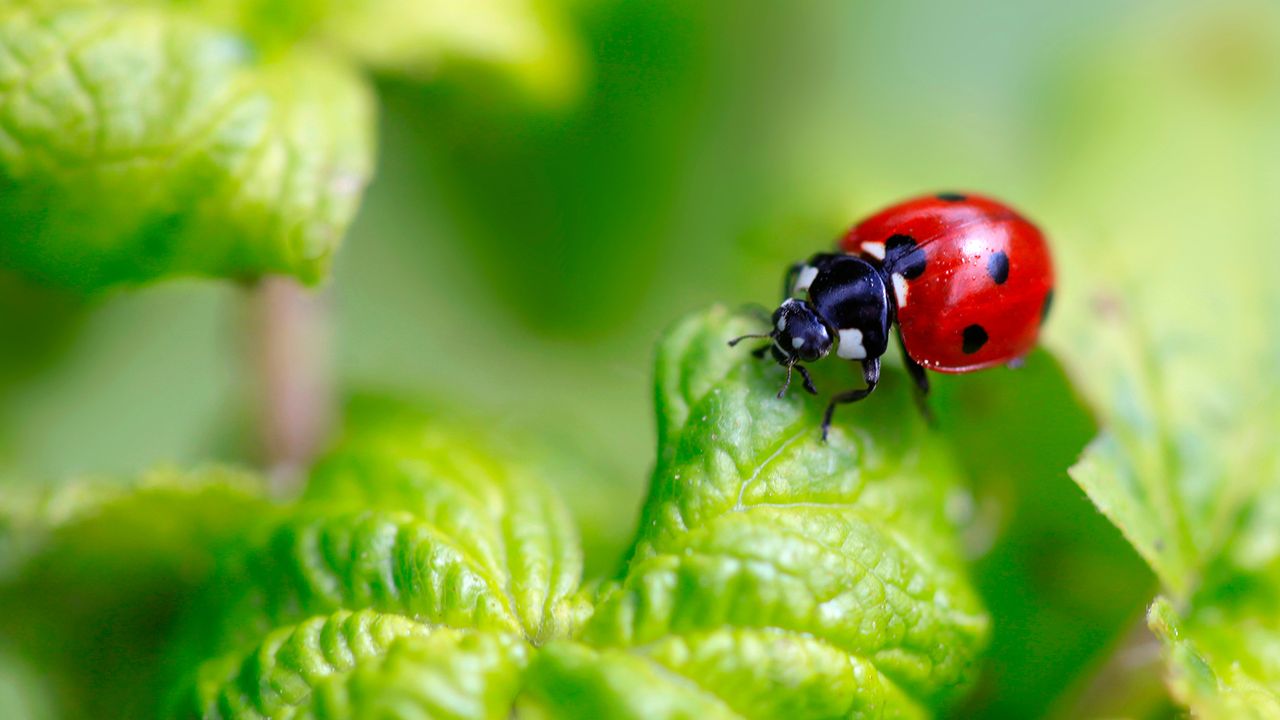Lifestyle
Pest Experts Urge Caution: Avoid Squashing Ladybugs Indoors

Pest control specialists advise homeowners to refrain from squashing ladybugs inside their homes, highlighting the unique consequences of such actions. Ladybugs, often regarded as harmless, can release a foul-smelling fluid known as hemolymph when threatened. This defensive response can stain fabrics and surfaces, and may even cause irritation to humans.
Sophie Thorogood, the technical training manager at Pest-Stop, explains that ladybugs employ a behavior called “reflex bleeding.” When squashed, they expel hemolymph through their leg joints, which contains isopropyl methoxy pyrazine, giving off a strong odor that acts as a deterrent to predators. This unpleasant smell can linger even after cleaning efforts, making squashing a ladybug an undesirable choice.
In addition to its unpleasant scent, hemolymph can also be harmful. It contains alkaloids that are toxic to many of the ladybug’s natural enemies. While it typically does not pose a serious threat to humans, it can cause numbness or irritation for some people. Thorogood advises, “It’s better to move them outside and let them be on their way than to squish them.”
Understanding Ladybug Benefits
Ladybugs play an essential role in maintaining a healthy garden ecosystem. They are natural predators of pests such as aphids, mites, and mealybugs, helping to protect plants without the need for chemical pesticides. Removing ladybugs from your surroundings can lead to unchecked pest populations, which may cause significant damage to gardens and landscapes.
These insects are also beloved for their distinctive red-and-black spotted appearance, often depicted as friendly creatures in children’s literature. This cultural perception contributes to a general affection for ladybugs, prompting many to consider alternative methods of removal rather than resorting to squashing.
If a ladybug happens to wander indoors, it is important to remember that it is likely lost and seeking its natural food sources outside. Instead of squashing the insect, gently pick it up and transport it towards a window or door. Ladybugs are capable fliers, so simply releasing them into the air allows them to find their way back to safety.
For those looking to deter ladybugs from entering homes, diatomaceous earth offers an organic solution. This fine powder, made from fossilized marine organisms, can be spread around outdoor plants to discourage pest invasions.
In conclusion, while the instinct to squash an insect may be strong, ladybugs deserve protection due to their ecological benefits and the potential consequences of squashing them. As homeowners become more aware of the role these creatures play in pest control, the focus shifts toward humane removal methods that contribute to a balanced environment.
-

 Lifestyle4 months ago
Lifestyle4 months agoLibraries Challenge Rising E-Book Costs Amid Growing Demand
-

 Sports3 months ago
Sports3 months agoTyreek Hill Responds to Tua Tagovailoa’s Comments on Team Dynamics
-

 Sports3 months ago
Sports3 months agoLiverpool Secures Agreement to Sign Young Striker Will Wright
-

 Lifestyle3 months ago
Lifestyle3 months agoSave Your Split Tomatoes: Expert Tips for Gardeners
-

 Lifestyle3 months ago
Lifestyle3 months agoPrincess Beatrice’s Daughter Athena Joins Siblings at London Parade
-

 World3 months ago
World3 months agoWinter Storms Lash New South Wales with Snow, Flood Risks
-

 Science4 months ago
Science4 months agoTrump Administration Moves to Repeal Key Climate Regulation
-

 Science3 months ago
Science3 months agoSan Francisco Hosts Unique Contest to Identify “Performative Males”
-

 Business4 months ago
Business4 months agoSoFi Technologies Shares Slip 2% Following Insider Stock Sale
-

 Science4 months ago
Science4 months agoNew Tool Reveals Link Between Horse Coat Condition and Parasites
-

 Sports3 months ago
Sports3 months agoElon Musk Sculpture Travels From Utah to Yosemite National Park
-

 Science4 months ago
Science4 months agoNew Study Confirms Humans Transported Stonehenge Bluestones








